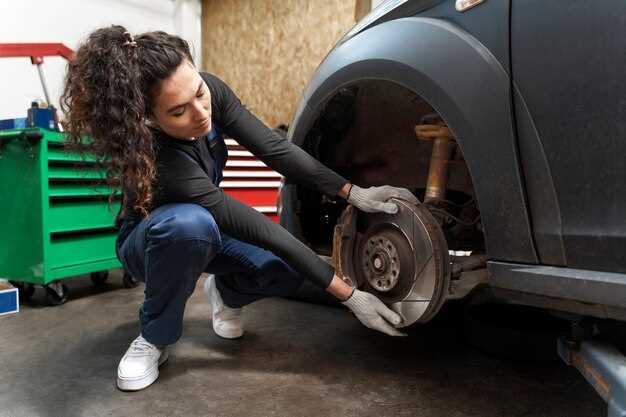
When it comes to vehicle maintenance, ensuring that your suspension and brakes are in top condition is crucial for safe driving. The testing of these systems not only affects your vehicle’s performance but also plays a vital role in the overall safety for you and others on the road. This guide aims to provide you with a comprehensive overview of what to check during suspension and brake inspections.
Regular inspections can help identify potential issues before they escalate into serious problems. Suspension components, including struts, shocks, and control arms, should be regularly assessed for wear and tear. Likewise, the brake system, encompassing pads, rotors, and lines, requires diligent monitoring to ensure optimal functionality. Both systems are integral to your vehicle’s handling and stopping power, hence it’s imperative to understand the best practices for testing and routine checks.
By following this guide on passing suspension and brake inspections, you can become more proactive in maintaining your vehicle’s longevity and safety. Implementing a routine check can save you time and money, while also providing peace of mind knowing that your vehicle is equipped to handle the demands of the road.
Key Steps for Conducting a Brake Test
Conducting a brake test is critical to ensure the safety and reliability of your vehicle’s braking system. Follow these essential steps to perform an effective brake test.
First, ensure that the vehicle is on a flat, level surface to prevent any unintended movement during testing. Engage the parking brake to secure the vehicle in place. This step is essential for evaluating the brake system without additional forces at play.
Next, start the engine and allow it to warm up. Check the dashboard warning lights to ensure there are no alerts related to the braking system. A normal operational state is necessary for accurate testing.
Once warmed up, begin by pressing the brake pedal gently and progressively increase pressure. Observe any unusual sounds, vibrations, or changes in pedal feel. A consistent pedal response indicates a healthy brake system, while spongy or unresponsive behavior may signal underlying issues.
After this initial check, perform a controlled emergency stop from low to moderate speeds. Monitor how the vehicle responds when brakes are applied. The vehicle should stop smoothly without pulling to one side, and the ABS (if equipped) should activate appropriately, preventing wheel lock-up.
Following the dynamic testing, inspect the brake components visually. Check for signs of wear on brake pads, rotors, and calipers. Ensure that brake fluid levels are adequate and there are no leaks in the system, which could compromise braking efficiency.
Finally, document the results of the brake test. Keep a detailed record of any abnormalities detected during testing, as this information will be crucial for maintenance decisions or further inspections. By following these steps, you can maintain the safety and performance of your vehicle’s braking and suspension systems.
Signs of Suspension Issues to Watch For

Keeping your vehicle’s suspension system in top condition is crucial for safe driving. Here are some key signs to watch for that may indicate suspension problems.
1. Uneven Tire Wear: If you notice your tires are wearing unevenly, it could signal issues with your suspension. Check for bald spots or tread wear patterns that are not consistent across the surface of the tire.
2. Pulling to One Side: When driving straight, if your vehicle tends to pull to one side, this might be a sign of misalignment caused by suspension problems. This can also affect your brake performance, making it essential to check both systems.
3. Bumpy or Rough Ride: A smooth driving experience can be disrupted by worn-out suspension components. If you feel excessive bouncing or jarring when driving over potholes or bumps, it’s time to have your suspension checked.
4. Noises When Driving: Listen for clunking, banging, or rattling noises while hitting bumps. These sounds often indicate that parts of the suspension system, such as struts or shocks, may be failing.
5. Fluid Leaks: Check for any hydraulic fluid leaks around the shocks or struts. Leaking fluid is often a strong indicator that your suspension needs immediate attention.
6. Steering Issues: Difficulty in steering or a loose steering wheel can also point towards suspension problems. You may experience excessive play in the steering wheel, which can compromise your control and safety on the road.
7. Visible Damage: Inspect your vehicle for any visible signs of damage, such as bent or broken components in the suspension system. Pay attention to parts like control arms, bushings, and sway bars.
Regularly inspecting these signs can help you keep your suspension and brakes in optimal condition, ensuring a safer driving experience. If you experience any of these issues, do not hesitate to consult a professional for a thorough check-up.
Preparing Your Vehicle for Comprehensive Inspections

Before undergoing suspension and brake inspections, it is crucial to ensure your vehicle is adequately prepared. Start by thoroughly cleaning your vehicle, both inside and out. This will not only improve visibility for the inspector but will also allow for a more accurate assessment of critical components.
Next, inspect the suspension system for visible signs of wear or damage. Look for any leaks in shock absorbers or struts, as well as any abnormal noises when the vehicle is in motion. Ensure that all bushings and joints are intact, as these parts significantly impact the performance during testing.
For the brake system, check the brake pads and rotors for adequate thickness. Worn-out pads or warped rotors can result in poor braking performance, leading to complications during the inspection. Additionally, examine the brake fluid level and condition; low or contaminated fluid can indicate underlying problems that need addressing.
Make sure your tires are properly inflated and have sufficient tread depth. Uneven tire wear can also affect suspension performance and may raise concerns during the inspection. Rotate your tires if necessary to promote even wear.
Lastly, ensure that all dashboard warning lights are off, as any illuminated light can lead to a failed inspection. Address any outstanding issues with your vehicle’s electrical system, as these can influence both suspension and brake functionality.
By following these steps, you can ensure that your vehicle is well-prepared for a comprehensive inspection, ultimately enhancing your chances of passing the testing with ease.




